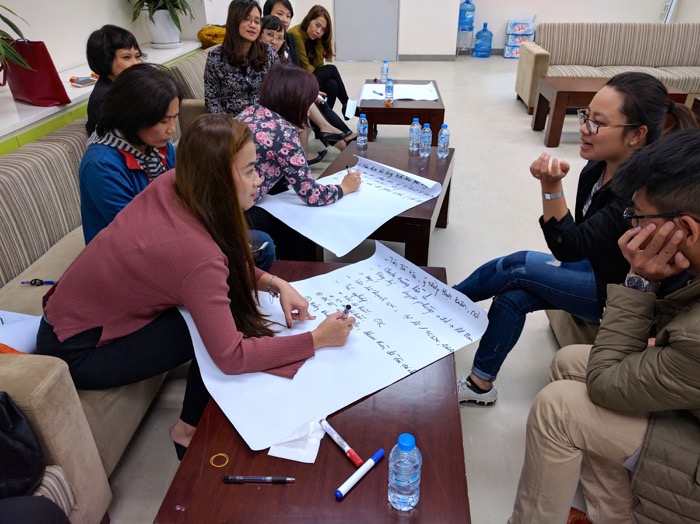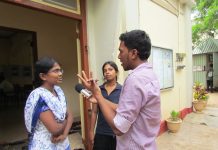
The following is a list of the essential elements required to ensure a successful daily newsroom meeting that provides a clear outline of what news stories are being covered.
They provide the framework needed for including all production and output areas in a decision making process that all have a part in. It’s about ensuring awareness, participation, cooperation, and collaboration.
The elements
- Diary and prospects
- Copies of the news diary should be available, including the news prospects, running orders of any TV or radio bulletins.
- The news diary will list events that all media organisations known about, such as news conferences and pubic events.
- Forward planning
- The forward planning prospects will be about original, in-depth journalism produced to meet the needs of your news organisation’s target audience.
- This will be unique content that has been created in advance and which is part of your core editorial proposition.
- Sections, specialists, rounds, beats
- In a large media organisation representatives of the various sections need to attend. In a small organisation it might be possible for most staff to attend.
- If the news operation has a website, a representative of the interactive team should be present along with the person responsible for social media.
- Representatives of the specialist units such as business, technology, health, environment, sport etc, should attend.
- Specialist staff will be expected to have prepared for the meeting by digging around stories where they might be able to add value and insight. The duty editor should ask them what is important in their particular areas of coverage.
- Design and graphics
- It’s important to have someone from the design team attending the meeting.
- Their job will be to create graphics to illustrate stories for the news organisation’s website, TV output, or print edition.
- Ideally graphics should be consistent in style whether used on online, on air, or in print.
- They could be graphics designed to explain a point, or they might be promotional graphics to draw attention to a story.
- Handover notes
- The notes left behind by the previous shift will help the editor of the day plan what resources will be needed and what to expect from the journalists.
- These notes are important because there is no point committing valuable journalistic effort to make repeat calls and carry out research that has already been undertaken by another member of your news organisation’s staff.
- Interactivity
- The team which runs the interactive element of the website, such as forums, polls and UGC (user-generated content), has an important part to play in the morning meeting.
- They might choose to speak last after they have heard all the ideas being floated around.
- The interactive team sets up opportunities for audience engagement, and also feeds back audience responses into the editorial process.
- It’s in everybody’s interest to run interactive features that can feed off news items and which can cross-promote those items across all platforms.
- Multimedia
- Similarly, the multimedia team will have a representative at the news meeting.
- They need to hear what stories are being produced and ensure that any audio and video to be used to illustrate those stories is made available online and on mobile.
- Those visiting your news website might not use the other platforms on which your news organisation’s information is presented. They might not watch TV, read newspapers, or listen to the radio. Your presentation of their daily intake of news on one particular device might be the only contact they have with your news brand.
- That is why it is important that you don’t assume they have already seen the news elsewhere. You might also have to act as a clearing house for all the other news being covered by others.
Your audience will expect you to sift through the hundreds of news stories, pick the most important 10 to 20, then present them in a way that makes sense to their lives. See: Creating a journalism content value matrix.

Newsroom meeting purpose
Newsroom meetings are far more than just a logistical exercise; they are critical for shaping the narrative, maintaining journalistic integrity, and fostering a collaborative environment.
- Diary and prospects:
- Events: The news diary isn’t just a list of events. It’s a map of how the day’s stories will play out. Editors should encourage journalists to analyse the diary, identifying potential angles, conflicts, and human interest stories that lie beneath the surface.
- Running orders: Understanding the running orders of TV and radio bulletins provides crucial context. It reveals the day’s dominant themes and allows for strategic placement of stories across platforms.
- Proactive journalism: Forward planning isn’t just about scheduling features. It’s about anticipating trends, identifying emerging issues, and developing investigative pieces that hold power to account. This requires a deep understanding of the audience’s needs and interests, as well as a commitment to journalistic excellence.
- Expertise and collaboration
- Specialisms: Specialist journalists should not only report on their beats but also offer insights into how their areas intersect with other news. This cross-pollination of knowledge can lead to richer, more detailed reporting.
- Questions: The duty editor’s role is not just to assign tasks but to ask probing questions that stimulate critical thinking. “What are the hidden implications of this story?” “How does this affect our audience?” “What are the ethical considerations?”
- Digital integration: The interactive and social media representatives are crucial for gauging audience sentiment and identifying trending topics. They should be encouraged to challenge conventional thinking and propose innovative ways to engage the audience.
- Design:
- Graphics: Graphics should not be an afterthought. They are powerful tools for visual storytelling, capable of simplifying complex data, illustrating the elements of stories, and engaging the audience. .
- Consistency: Maintaining a consistent visual style across all platforms reinforces the news organisation’s brand identity and enhances audience recognition.
- Interactive: The digital age allows for interactive graphics that engage the audience and deepen their understanding of the news. This could include interactive maps, data visualisations, and simulations.
- Handover
- Legacy: Handover notes are a form of knowledge management, ensuring that valuable information is not lost between shifts. They should include not only factual details but also insights, leads, and potential pitfalls.
- Efficiency: Preventing wasted effort frees up resources for more in-depth reporting and investigative work.
- Continuity: Handovers help to ensure that ongoing stories are covered consistently and comprehensively.
- Interactivity
- Two-way: Interactivity is not just about broadcasting information; it’s about fostering two-way communication with the audience.
- UGC: UGC (User Generated Content) can provide valuable insights, eyewitness accounts, and diverse perspectives. However, it must be carefully vetted to ensure accuracy and ethical standards.
- Feedback: Audience feedback should be incorporated into the editorial process, informing future coverage and shaping the news organisation’s priorities.
- Multimedia:
- Platform-specific: Multimedia content should be tailored to the specific characteristics of each platform. A video designed for social media will be different from a video designed for a television broadcast.
- Accessibility: Multimedia content should be accessible to all audiences, including those with disabilities. This includes providing captions for videos, transcripts for audio, and alternative text for images.
- Cross-promotion: Multimedia elements should be seamlessly integrated across all platforms, creating a joined-up and engaging news experience.
- Curating: In the age of information overload, the news organisation’s role is to curate and prioritise the most important stories, presenting them in a clear, concise, and engaging manner. This requires a deep understanding of the audience’s needs and interests, as well as a commitment to journalistic ethics.
- Verification: With the spread of misinformation, the newsroom has a greater responsibility than ever to verify information, provide context, and build trust with its audience.
By focusing on these expanded concepts, newsrooms can transform their daily meetings from routine briefings into dynamic forums for journalistic excellence.








